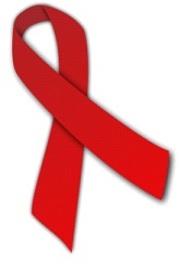Introduction
AIDS is caused by a virus called HIV, the Human Immunodeficiency Virus. If AIDS and HIV positive are contracted, it can be identified by different people at different times. The symptoms vary from one person to another. Some people can identify the symptoms within weeks of infection, many people will develop the varied symptoms of primary or acute infection that can be described as a "influenza” but can range from minimal fever, aches, and pains to very severe symptoms. The most common symptoms of primary HIV infection are fever, aching muscles and joints, sore throat and swollen glands (lymph nodes) in the neck.
History

The discovery of AIDS and HIV dates back to 1981. This became apparent when homosexual men with symptoms of a disease that now are considered typical of AIDS were first described in Los Angeles and New York in the United States. The men had an unusual infection and rare skin tumours called Kaposi's sarcomas. The patients were noted to have a severe reduction in a type of cell in the blood (CD4 cells) that is an important part of the immune system. These cells, often referred to as T cells, help the body fight infections. The symptoms of these diseases were recognised all around the world, especially in western Africa and parts of Europe. In 1983, it was discovered that the virus that causes AIDS, now known as HIV, belongs to the group of viruses called retroviruses. While HIV infection is required to develop AIDS, the actual definition of AIDS is the development of a low CD4 cell which destroys the immune system of the body. This disease is contracted through various mediums.
Features
AIDS can be contracted by people if they get infected with HIV. This can be through from anyone who is already infected, even if they don’t look sick and even if they haven’t tested HIV-positive yet. The blood, vaginal fluid, semen, and breast milk of people infected with HIV has enough of the virus in it to infect other people. Most people get the HIV virus by:
Having sexual intercourse with an infected person
Sharing a needle with someone who’s infected.
Being born when their mother is infected, or drinking the breast milk of an infected woman.
Getting a transfusion of infected blood was how people got AIDS. Nowadays, the blood supply is screened carefully; the risk of contracting it in this manner is extremely low but you should still get your self to check wether or not you contracted it.
Tips and comments
To avoid having AIDS and HIV contracted the following methods can be used:
Abstinence: For pre-adolescents and young people who are not sexually active, abstinence and delaying sexual debut should be promoted as the most effective way to avoid infection.
Being faithful: For sexually active adults, there are programs developed that encourage having fewer sexual partners and using condoms correctly and consistently. There is some evidence suggesting that mutual fidelity and partner reduction have been effective in reducing HIV infections. For example, in Uganda, the contraction of HIV is on the rise and they have developed the “zero-grazing” strategy which focuses on reducing number of partners and being faithful.
Condom use: Behavioural change programs that emphasize condom use have been found to be particularly cost-effective among those who are most at-risk of having this disease contracted.